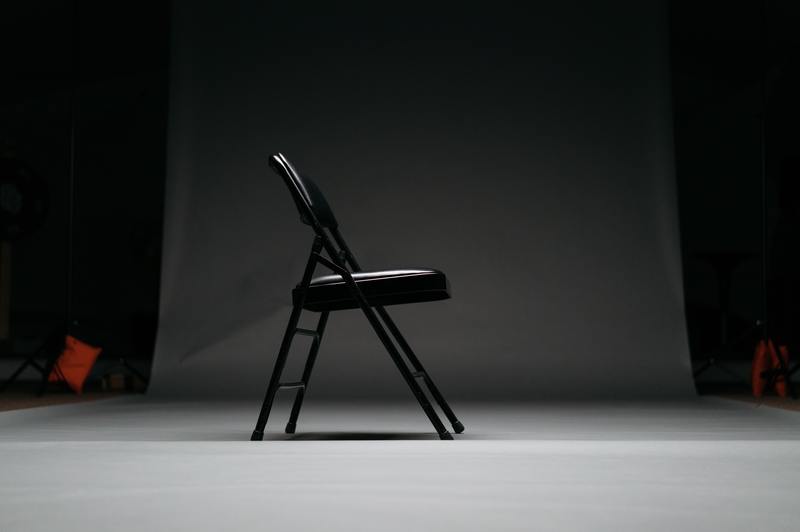In this article, you will know how to fix a squeaky chair easily. Office chairs are usually made of pieces that are screwed together, and going through a ton of movement over time can give off annoying sounds.
Most of the time, these squeaks and sounds result from moving or rubbing the parts of the chair against each other because the screws that hold them have become loose. There are also concerns about lubrication in joints when they become rusty or have worn off.

A squeaky chair can be a nuisance for you and the people sitting in the room. Fortunately, squeaky desk chairs don’t necessarily mean that you have to buy new ones.
When diagnosed properly, squeaky chairs can be very easy to fix. Here is a simple step-by-step guide to help you.
Fixing A Squeaky Office Chair
Step #1. Check the hardware
Turn your office chair over and check for the nuts, bolts, and screws. You can use a screwdriver to wrench or tighten any loose hardware, even those you think are fine.
Over time, it is fairly easy for the screws and bolts to turn loose. This causes parts of the chair to rub together, thus creating squeaky noises.
Step #2. Oil the mechanisms
Moisture in the air can cause rust, so it is important to apply lubricating oil to prevent the build-up of rust. For lubrication, simply spray lubricating oil on the nuts, screws, and bolts to loosen the joints of the chair. You can also opt to spray oil on a soft cotton cloth and rub the oil on problem areas to gain more control of where the oil is supposed to go.
Remember to remove all the bolts, screws, and nuts entirely before adding any oil or lubricant. If the chair still squeaks after such measures and tightening the hardware, you may need to lubricate them with light machine oil instead.
Tip: Have a friend sit in the chair
You can better locate the area where the chair is squeaking by applying weight to it to make it squeak. This allows you to find the noise source more accurately, and you can use oil in targeted areas. Simply ask your friend to sit on the chair and swivel from time to time to check if you put the oil in the right spots.
Step #3. Fix the springs in the chair
The chair could also squeak when you lean back. This is caused by too much tension where the ends of the spring rub on the ends of the housing.
To fix this, you can apply oil to the seat tension spring. This is located inside the turn-knob housing. You can loosen the turn-knob and remove it to spray oil inside the housing.
Step #4. Check the wheels
Desk chairs often move a lot, so the axels in the wheels need to be taken care of regularly. Turn the chair over so that you can spray the wheels with silicone spray. After, flip the chair back and roll it to spread the silicone around the wheels.
Step #5. Sit and check
Chairs can go through a lot of wear and tear, so you have to be cautious when you sit so that you don’t end up loosening the joints. You can also apply your weight to the chair to see if any more squeaks need fixing.
I fixed the hardware and the back of my chair, but there are still squeaky noises. What else could be the problem?
If you went through the fixes but can still hear the squeaking sound, you may want to check the chair’s gas lift piston. You will have to tear this down to fix the chair altogether.
However, there are cases where lubricating agents can help maintain your chair instead. This means that if you can’t locate the squeak, it is best to spray all the moving parts of the chair instead.
What can I use to lubricate my squeaky office chair?
Silicone-based lubricants are great for metal, plastic, or rubber materials. To fix squeaky chairs, penetrating oil works wonders. These oils have low viscosity, so they can seep into tiny cracks to loosen any rusty hardware.
I don’t have lubricating oil or WD-40. Can I use other lubricants?
Olive oil or baking spray oil can be used for a quick fix. However, for a more thorough job, you may want to use a silicone-based lubricant instead. Motorcycle chain lubricants can also work, and they come in a spray can with a fine tube for better application.
If lubricants cannot fix the squeak after several attempts, you may want to find more drastic actions. Try applying lubricants to surrounding joints and check whether or not this makes a difference. You may also want to remove the arms or seats of the chair to check the springs and joints.
Sometimes, squeaks are caused by fractures, excessive wear and tear, and other malfunctions that cannot be fixed with lubricants. Even if you know how to fix a squeaky chair, quick fixes like lubrication cannot solve the problem. In these cases, it may be time for you to find a new chair instead.
Conclusion
Now that you know how to fix a squeaky chair, go take care of your problem and improve your workplace productivity! Whether you are working in the office or at home, this is a simple guide to make your work life much more effective.
